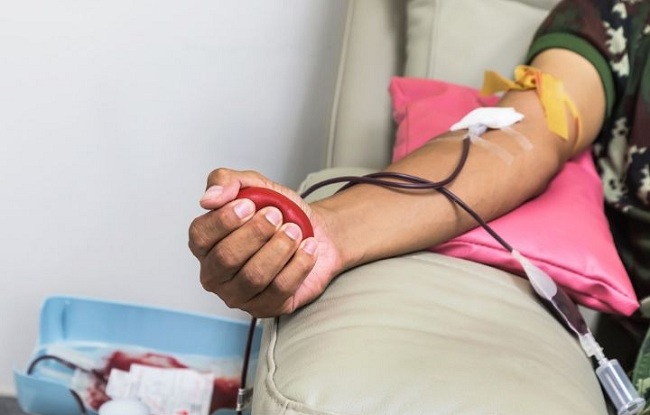DISCLAIMER
The information and materials accessed through or made available for use on any of our Sites, including, any information about diseases, conditions, treatments, or medicines, are for informational purposes only. The Content is not intended to be and is not a substitute for professional medical advice, diagnosis, or treatment, and your participation on our Sites does not create a healthcare professional-patient relationship. You should consult a doctor or other qualified health care professional regarding any questions you have about your health or before making any decisions related to your health or wellness. Call your doctor or 911 immediately if you think you may have a medical emergency.compose your message
message sent
email sent successfully
Trusted Resources: News & Events
Latest announcements and gatherings
UH Researcher Reports the Way Sickle Cells Form May Be Key to Stopping Them
University of Houston associate professor of chemistry, Vassiliy Lubchenko, is reporting a new finding in Nature Communications on how sickle cells are formed. Lubchenko reports that droplets of liquid, enriched in hemoglobin, form clusters inside some red blood cells when two hemoglobin molecules form a bond – but only briefly, for one thousandth of a second or so.
The mystery of how the clusters form has long puzzled scientists. In patients with the inherited blood disorder known as sickle cell disease, or anemia, abnormal hemoglobin molecules line up into stiff filaments inside red blood cells, distorting their shapes and making it difficult for the blood cells to flow through narrow blood vessels. For the filaments to grow, the protein first congregates into tiny liquid droplets that are bigger than an atom, but so small their measurements are counted in increments between microscopic and macroscopic, called mesoscopic.

 +myBinder
+myBinderRelated Content
-
education & researchAssessing Disease Knowledge and Self-Management in Youth With Sickle Cell Disease Prior to TransitionIntroduction: Transition of medical car...
-
news & events10th Annual Walk with the Stars – Sickle Cell Disease Association of America, Inc.When: September 16, 2023 Where: Rash Fi...
-
news & eventsNFL Broadcaster Solomon Wilcots and Emmaus Life Sciences Kick Off “Sideline Sickle Cell” Campaign during...Emmy Award-winning NFL broadcaster Solom...
-
news & events2019 Cure Sickle Cell Initiative Annual Forum: Accelerating Scientific PrioritiesTuesday, November 19 - Thursday, Novembe...
-
videos & visualsSickle Cell Warriors: Session 2https://vimeo.com/286941813...
-
news & eventsWebinar Series: Sickle Cell Science: Path to Progress – Serving the Sickle Cell Disease Community Here and Abr...To commemorate Sickle Cell Awareness Mon...
-
education & researchAssociation Between Hospital Admissions and Healthcare Provider Communication for Individuals With Sickle Cell Disea...Objective: To test the hypothesis that ...
send a message
To improve your experience on this site, we use cookies. This includes cookies essential for the basic functioning of our website, cookies for analytics purposes, and cookies enabling us to personalize site content. By clicking on 'Accept' or any content on this site, you agree that cookies can be placed. You may adjust your browser's cookie settings to suit your preferences. More Information
The cookie settings on this website are set to "allow cookies" to give you the best browsing experience possible. If you continue to use this website without changing your cookie settings or you click "Accept" below then you are consenting to this.
Support for this site is provided by

This platform is made possible through a partnership with the Sickle Cell Disease Association of America, Inc. (SCDAA) and its member organizations. SCDAA's mission is to advocate for people affected by sickle cell conditions and empower community-based organizations to maximize quality of life and raise public consciousness while advancing the search for a universal cure.




